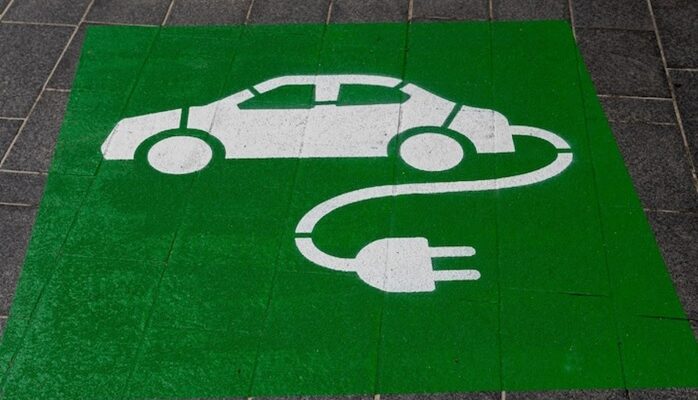
Green thinking is gaining momentum. Today, American, European, and Japanese automakers are becoming more eco-friendly, cutting emissions and phasing out internal combustion engine production in favor of electric vehicles, and deliberately thinking about what will happen to the car after it is out of service.
By the 2020s, there is a consensus in Western society that throwing an old vehicle into a landfill is too much of a luxury for our planet. The production of one car takes a huge amount of resources: for the manufacture of a ton of parts, 150 tons of natural substances are processed: ferrous metals, lead, copper, nickel, zinc, and others. Burying them in the ground or leaving them out in the open is an unacceptable option for millions of people on the planet. Here is an overview of the latest green initiatives of world automakers who strive to make a step toward a better future.
How Automakers Use Recycling
Ford garnered international media and auto industry attention when it announced in June 2018 that each vehicle contained 250 recycled plastic bottles, recycling 1.2 billion bottles annually.
A year ago, Volvo guaranteed that at least 25% of the plastic used in car production would be recycled by 2025 as part of an UN-backed environmental initiative. The Swedish company has asked its car suppliers to work more closely with manufacturers to develop next-generation parts that are as environmentally friendly as possible, focused on recycled plastics use.
Ford’s recycled plastic parts cover the front and rear wheel arches and protect the chassis.
Opel has also been using recycled plastic in cars since 1990. Calibra models already include four types of recycled materials integrated into the headlight frames and water deflectors, bumper mounts, and intake manifolds.
The BMW company recently revised its goals and now intends to bring the amount of “recycled materials” in new models to 50%. BMW will explore how to make better use of valuable materials such as copper, steel, aluminum, plastic, and glass. The project will involve five hundred decommissioned cars – from MINI to BMW and Rolls-Royce. For the purity of the experiment, the company will use not only cars with internal combustion engines but also hybrids with electric vehicles. As a premium carmaker, BMW must ensure that its recycled materials meet the quality standards of luxury vehicles. Today, the share of recycled materials in the new BMWs is about 30%. For example, the next-generation MINI Countryman will ride on 70% recycled aluminum wheels and interiors made from recycled PET bottles and old carpets.
The Porsche brand is also experimenting with plant-origin materials: the 718 Cayman GT4 Clubsport sports car has doors and a rear wing made from an organic composite material based on hemp and linen fibers. The company claims that such material is not inferior in strength to carbon fiber.
The used car experts from the Indianapolis dealership, Indy Auto Man, believe that green technologies and solutions not only help automakers reduce the negative impact of cars on the environment but also create new opportunities for growth and development in the automotive industry.
In theory, there is a more radical way to solve the car recycling issue – by creating a biodegradable vehicle. The University of Eindhoven (Netherlands) announced such a development several years ago. They created the elements of the experimental model based on flax fiber. The Line vehicle used biodegradable plastic parts made from sugar beets. Only the wheels, the battery, and some parts of the suspension were not biodegradable. Of course, the developers do not hope for the mass production of such cars. Their task is to introduce individual biodegradable elements into the automotive industry. For example, body parts and bumpers.
However, some eco-activists question the postulate that all biodegradable materials are a priori environmentally friendly and reduce the burden on the environment. For example, the degradation time of some types of bioplastics can be comparable to the degradation of conventional plastics.
Recycling Alternatives and Advances in Tire Manufacturing
Most car tires today are made up of petroleum, natural rubber, and carbon black filler (partially derived from burning fossil fuels), as well as some other chemical additives to improve performance. In recent years, the tire industry has shifted to recycling, but still, about 25 percent of tires end up in landfills. However, others are burned, releasing lead, styrene, butadiene, and other potential carcinogens into the atmosphere.
In response to such criticism, tire engineers began using new materials as substitutes for chemical fillers and petroleum. Those green tires contain chemically hardened natural rubbers, plant-based process oils, and plant cellulose fibers to replace some of the oil in new tires. Also, environmentally friendly silica filler replaces the carbon black reinforcement, with the additional benefit of further reducing friction on the road.
While greener tires are already available, tire manufacturers are redoubling efforts in recycling old tires into new ones and reducing the environmental footprint. Small amounts of recycled rubber are increasingly showing up in new tires, but ecoactivists would like to see more tires recycled to live another useful day in the form of new wheels or other products.
If the current trend continues, recycling and biodegradability will be the next big breakthrough in the automotive industry. And if before the machines became obsolete and destroyed, then in the beautiful world of the future, the details may be able to rot on schedule. And the best engineers of the 21st century will schedule such decomposition.











